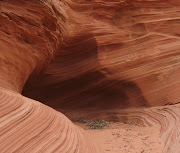
 Here is a picture of a brand spanking new baby fresh rover. Toddler Spirit is filthy now and needs to settle down for a long winter's nap to begin exploring Mars anew after this season's dirt blowing storms. It's identical rover sibling, Opportunity, was scrubbed squeaky clean by a wind storm. The red oxidized dirt clinging to Spirit is now acting like camouflage hiding it amidst Mars natural coloring. There is deep concern that Spirit may not awake on command.
Here is a picture of a brand spanking new baby fresh rover. Toddler Spirit is filthy now and needs to settle down for a long winter's nap to begin exploring Mars anew after this season's dirt blowing storms. It's identical rover sibling, Opportunity, was scrubbed squeaky clean by a wind storm. The red oxidized dirt clinging to Spirit is now acting like camouflage hiding it amidst Mars natural coloring. There is deep concern that Spirit may not awake on command."Spirit is going into the winter with much more dust on its solar panels than in previous years," said NASA's Mars
rover project manager, John Callas. "The last Martian winter, we didn't move Spirit for about seven months. This time the rover is likely to be stationary longer and with significantly lower available energy each Martian day."
The dust and faint sun have left Spirit's electrical system operating at just 42 per cent of its capacity - with predictions it could drop as low as 30 per cent during the winter. The rover needs a constant supply of power to ensure its delicate electronics are kept warm and are not damaged in the freezing conditions.

However, the silica find excites scientists on Earth to seek the type of hearty microbes that may have swam on Mars in a steamy "Hot Springs" setting no less. Scientists from the Mars Science Laboratory will get their chance to examine the area in September of 2009 when NASA's next iteration of robot explorers are jettisoned onto the planet.
The illustrated offering from Jim Bell, Postcards from Mars: The First Photographer on the Red Planet, captures the beauty of the planet in high resolution photos. Spirit and Opportunities latest pictures from their extra long adventure will make a wonderful addendum.













No comments:
Post a Comment